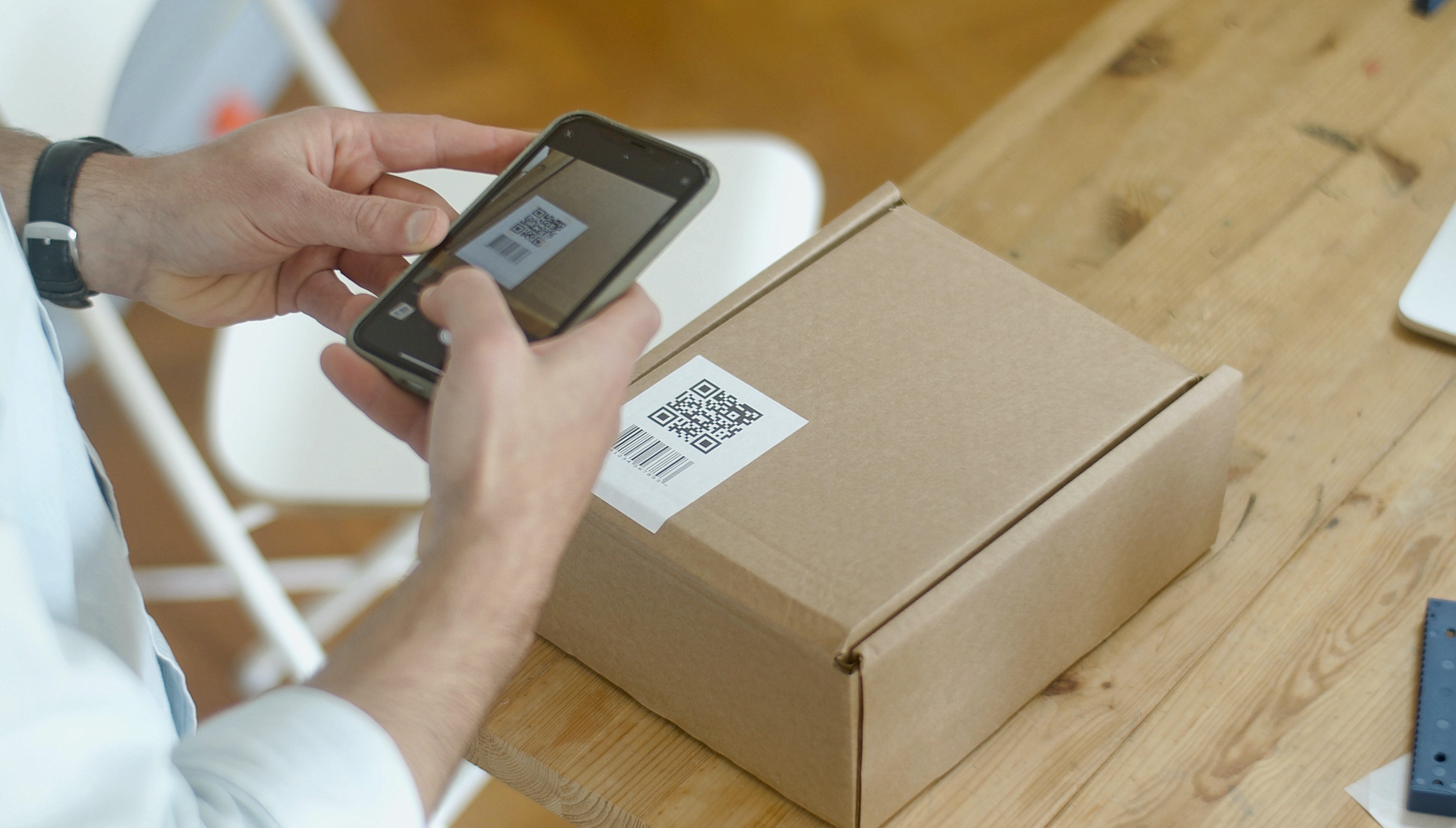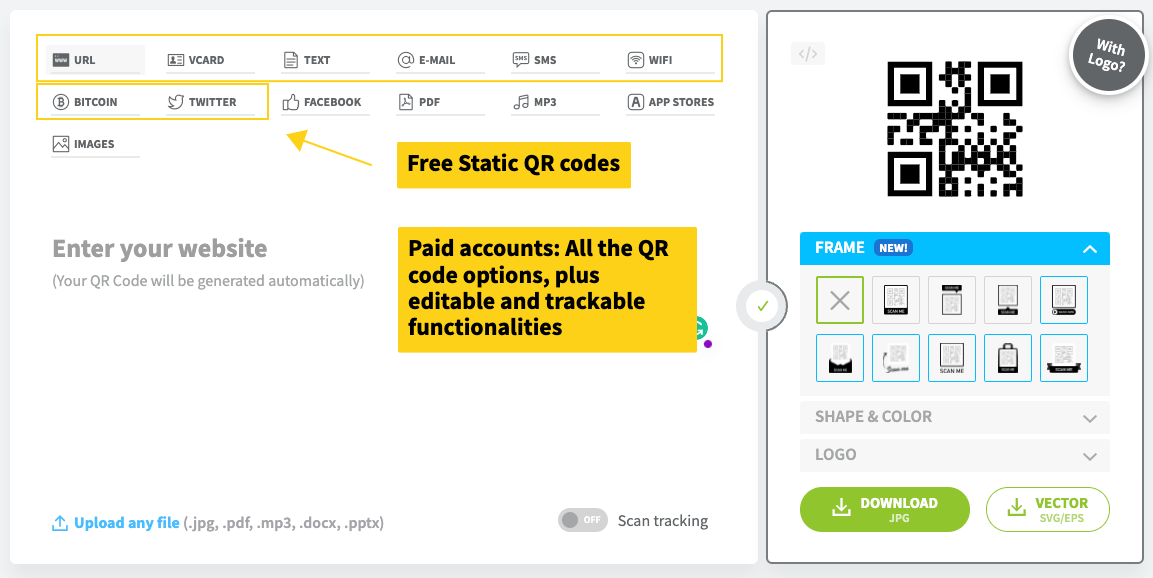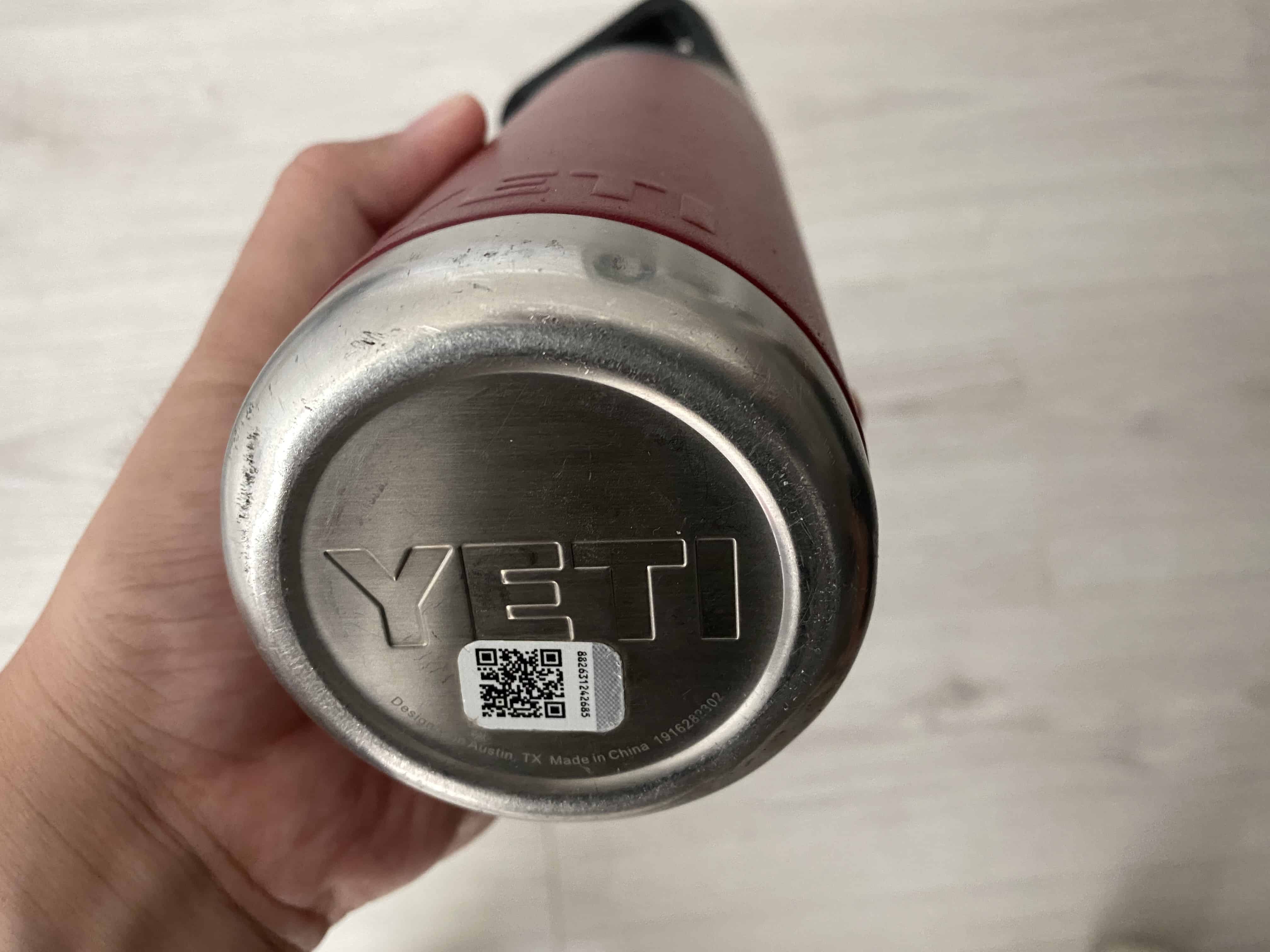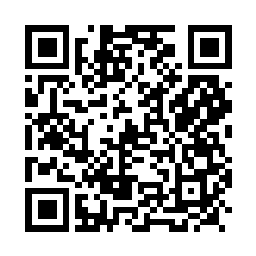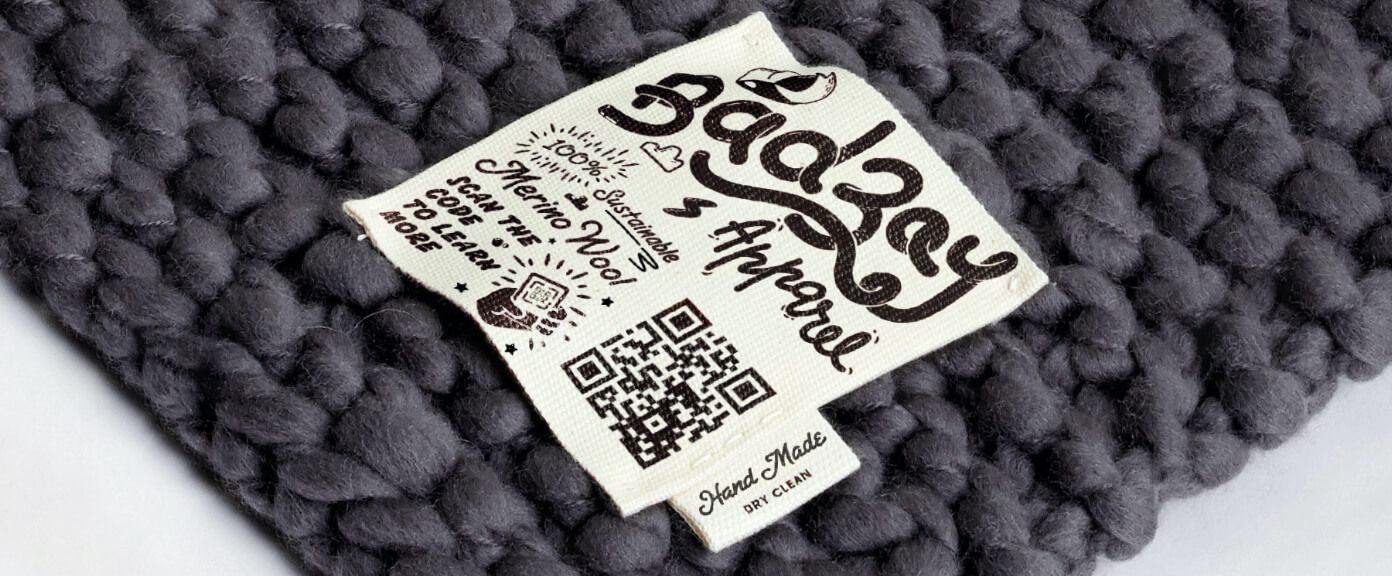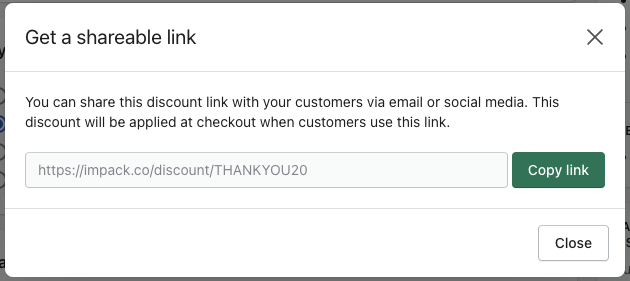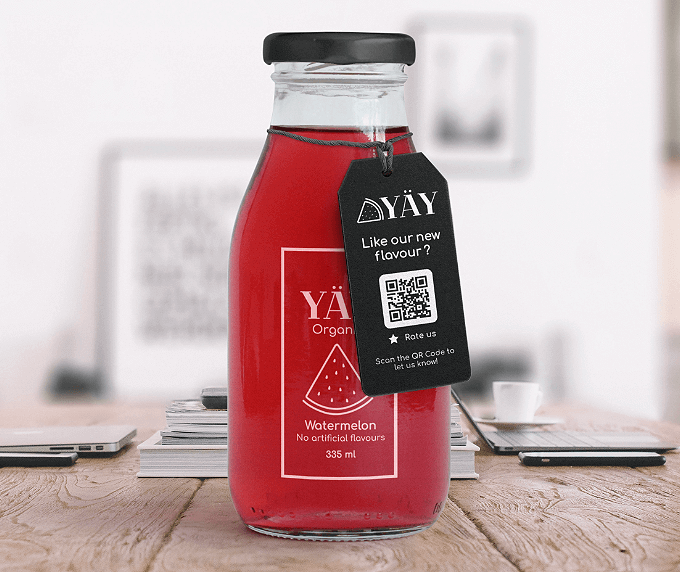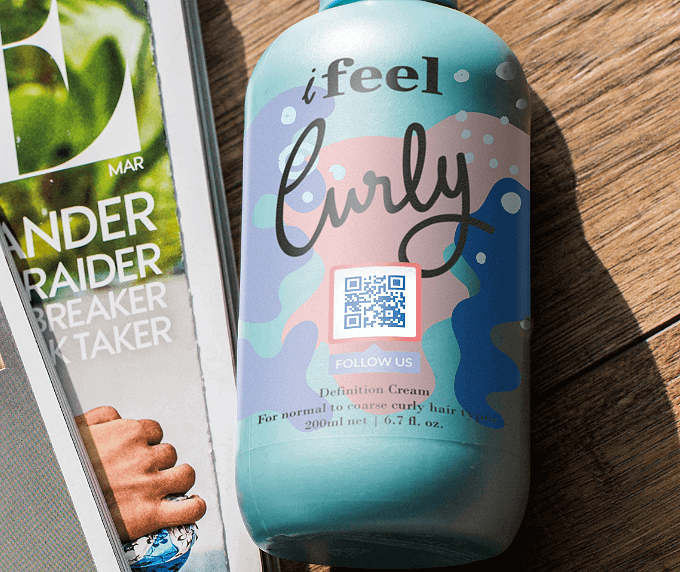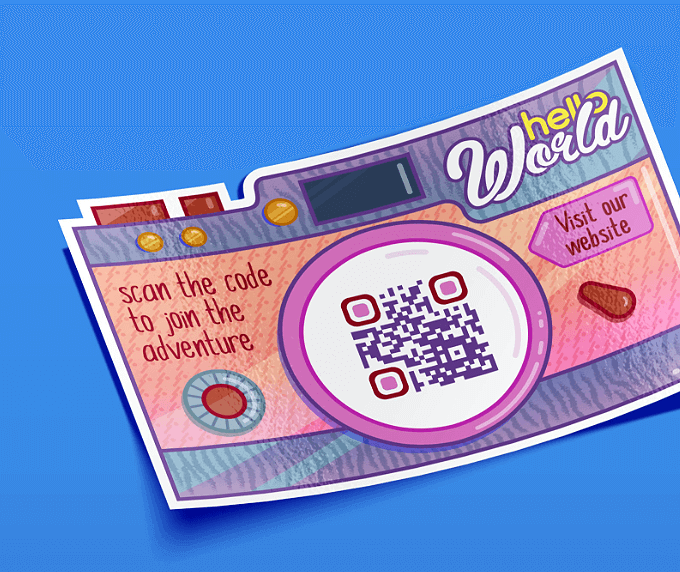Picture this:
Your customer opens their beautifully packaged order and finds the thank-you card with your handwritten notes for her. She is touched and sees that you have a one-time offer on a similar product that she has also been considering for a while.
However, her 5-month-old baby is throwing a tantrum and while she is trying to tend to him, she is struggling to enter that long URL to claim your discount code. After 30 minutes, the thank-you card falls into a corner of the room, and she totally forgets about it.
Enter QR codes.
While the concept of using QR codes seems foreign (or even outdated) in the US and Canada, it has been adopted on a massive scale in Asian countries, namely China, Singapore, Taiwan, and Vietnam. People use QR codes to visit specific links without typing, contactless payments in physical stores, buy things online & offline and even pay bills. When we went to China on a business trip, it is also very common to have QR codes on your business card, so people can add one another on WeChat.
What Are QR Codes?
Photo: Kampus Production
Quick-Response codes or QR codes consist of black and white squares that are easily readable by smartphone users using the camera app, or any QR code scanner app. In short, QR codes can store a lot more information than a barcode and can trigger pre-set action such as opening a web page, downloading an app, or even help you draft an email (more on that later!)
There are 2 types of QR codes: Static and Dynamic.
- Static QR codes cannot be changed or updated once created. It also does not give you statistics such as how many people scan your QR Code, from which device, and when they scan it. Static QR Codes are best for developers and users who want to use them to lead to their personal bio pages.
- Dynamic QR codes on the other hand, enable you to create a customized landing page for your QR Code that can be changed and updated at any time, regardless of whether the QR Code has been created or published. It also gives you the statistics mentioned above that Static codes cannot offer. The most common users of this type are business owners, restaurants, artists, and non-developers.
Restaurant Businesses Led The Way
During the pandemic, restaurants were the first to adopt using QR codes, so people can scan to view the menus. However, other than convenience reasons, businesses can really learn a lot about their diners through the QR code scans: when, where, how often people scan, retarget visitors using social media ads. QR code menus help to cut down labor costs by eliminating the need to bring, collect, clean menus and even taking orders in a lot of cases.
However, QR codes are not just limited to restaurant menus anymore! It is one of the easiest ways to put a product or service in front of potential customers. You can use them on any surface. They are low-cost but highly effective tools that help you increase your communication with your customers, and ultimately lead to sales.
Before jumping into some of the strategies you can apply to increase sales using QR codes, let's look at the basics of how to create one
How To Create A QR Code?
You can create a QR code from any web link, using an online QR code generator. There are hundreds of online generators from free to paid monthly, and while QR code is so popular now that Google Chrome even has that feature built-in, it's worth noting that most (if not all) of these free options are static codes, which means you cannot change the links once it's created, nor do they give you any analytics feature.
Source: qr-code-generator.com
Some popular QR code generators
The good thing about these tools is that most QR code generators allow you to customize the colors, design, and even add your own logo to match your branding.
To leverage the above features of QR codes, I would recommend either using a paid QR code tool, or one of the link shortener tools.
As the name suggests, a link shortener tool shortens your link to a handful of characters. Most importantly, it gives you analytics on who visited your site, including location by city, device type, browser version, referral source, and much more, which helps you target your audience effectively.
Knowing these insights, whether from the dynamic QR codes or from a link shortener tool, is useful because it allows you to tailor your message based on your audience's interests and demographics.
If you find out more than 80% of your audience are using mobile, you would want to make sure your landing page is mobile optimized. If and the majority of them are located in a handful of states, you would know to concentrate most of your ad budget to target those states. It also helps you understand if there’s something wrong with your marketing strategy. For example, if you see no traffic coming from social media channels, then maybe you should consider revamping your content strategy or tweaking the Call to Action.
Using QR Codes To Create A Friction-less Customer Experience
Here are some use cases where you can reduce a ton of friction when it comes to post-purchase experience with your customers.
Downloadable freebies
Say you sell party supplies for birthdays, baby showers, weddings, etc., You can create a few free printables as bonuses such as birthday invitations (that double as coloring pages if it's for a kid's birthday), or a wedding welcome sign poster, etc.,
These are low-cost, high-perceived value gifts that would surely help to give your customers a nice surprise even after a purchase. Again, asking them to scan the QR code to claim the gift would be much easier and quicker than asking them to type in a URL here.
When a customer needs to reach support
Q: What's the quickest way to reach customer service when your product stops working? Or when you receive a product that's in the wrong color?
A: You whip out your phone → find the email receipt from last week → find the contact email or phone number somewhere at the bottom of that email, and start writing to explain the issue.
Or… you can put a QR code on the product label, product tag, or at the bottom with a message: “Problem with your order? Scan this code to contact us”.
Brands like YETI have been using QR codes to allow their customers quick access to support and product registration within a touch of a button.
The QR code on my YETI bottle takes me to a product registration page.
Below is an example I created with Switchy, where you can draft a message template so when people scan the code, it would take them to their email app, draft a support request email with all the contexts, and the customer just needs to fill out some basic information such as their name and order number.
Click here to see what happens when someone scans the code.
You can see that it literally takes less than a minute for someone to find the code, fill out the information and send out a support ticket.
If you want to be even more proactive, show people the behind the scene video of how the product was made. Customers love BTS sneak peeks and will appreciate knowing about the process even after buying.
Source: qr-code-generator.com
Customized messages based on the products bought
Gone are the days where brands would send mass, generic messages to everyone who is your customer. Nowadays, retailers can personalize each message according to what items they sell.
For example, if you're selling clothes, you might want to send out special discounts to men vs. women; if you're selling baby products, you may want to target certain age groups. Moms buying silicone bibs for her kid who has just started eating solids would likely have different needs than those who buy swaddles for her newborn.
Context matters
It helps you understand your customers more, and as the result, allows you to craft messages that are more relatable, and show that you understand their needs.
Using a different QR code for each of the products mentioned above, you can send them some helpful information such as 5 of your favorite recipes for Baby Led Weaning, or care instructions for the delicate dress they've just received. The more relevant your message to the customers, the better the customer experience and the more likely they would be to listen to what you have to say the next time.
Leveraging QR Codes To Increase Sales For Your Store
Here are a number of ways you can do that:
1. Offer discounts via QR codes
Even this relatively short link would be a chore to type into your phone at times.
It's fairly easy these days to create a discount code for your customers. However, those discount code links are often long with random characters and are ultimately hard to type, let alone remember. If you use a QR code to deliver your coupon link, say on a thank you card, your customers don't have to manually type in the link.
Moreover, if you use any of the good link shortener tools that also generate QR codes such as Switchy, you would how many people were interested in the offer enough to scan the code, where they are located, and lots of other insights.
2. Asking buyers to leave reviews
It is by no coincidence that most of the best-selling items on Amazon, Etsy, or any online shops tend to have a large number of reviews.
Reviews are a vital part of any business, especially ecommerce businesses because they provide invaluable insight into your brand not from your own words, but from the words of your customers. Reviews are not only helpful for potential buyers but also for existing ones who may be looking for more reasons to buy from you.
Other than the benefit above, reviews and feedback have helped us to make countless improvements to our products to make sure we build the right features that people actually want. If there are any issues, an easy way to leave feedback would also allow you to jump in and resolve the matter quickly, thus improving a chance to gain loyal customers.
A review from your customer goes a long way. Source: qr-code-generator.com
Tip: The quickest way for a customer to leave you a review on Etsy is to go to https://www.etsy.com/your/purchases
3. Growing your audience = more chance to make sales
Reward your customers for sharing about your brand. Source: qr-code-generator.com
Giveaways is one of the most effective ways to grow your audience, whether it's your Instagram following or to collect their email address. Just like how reviews are a powerful persuasion mechanism, asking your existing customers to refer their friends and families for a chance to win something they already love can also work wonders. Plus, did I say that it's also great for social media engagements?
You're much more likely to buy something if your friend with similar tastes bought it and personally recommends it to you.
4. Avoiding the $10,000 mistake
I have shared previously about how we had to live with one typo I made on our first custom mailers until we finish using those mailers for Nightingale. It was not only costly but also took up a lot of space in the warehouse for a long time.
What I didn't tell you was that:
- We also changed our domain from 9tingale.com (don't ask me why I picked that) to nightingale.baby, along with our social media site handles.
- The typo was for the one mailer design, but we ordered 4 different designs to fit 4 different products.
Source: qr-code-generator.com
The one thing that saved us from that disastrous mistake was that we used a dynamic QR code to link back to our website and social media accounts, which means we can change the URL destination anytime, but the QR code remains the same.
That packaging order alone cost us over $10,000. The reason I'm sharing this is so that you can see how costly these mistakes can be, and exactly why I'm a huge believer in dynamic links and especially QR codes.
5. Keeping your promotions up to date
Source: qr-code-generator.com
QR codes can be very handy with seasonal/promotional updates, as you can use dynamic codes to link to any digital platform available.
If you want the QR code to take people to a post-purchase survey this month, then Valentine's special promotion for just next week, followed by a giveaway you're hosting next month on Instagram, you only need to change the destination URL and don't ever have to touch the QR code.
Weighing up the Options
Like everything else, QR codes have their pros and cons. Your customers must own a smartphone to be able to scan them, and some people who are not tech-savvy might not fancy them. However, the very fact that you have an online presence should already define your audience to a large extent.
Using QR codes is a great way to quickly and easily link your customers to a digital platform. They are also super helpful for helping you keep all your promotions up-to-date in front of the customers.
For brand owners, the most important thing to worth nothing, however, is that the customer relationship does not end once they make an online purchase. In contrast, it's the beginning of a new relationship that brands need to continue to nurture throughout the entire customer journey. If done right, marketing through QR codes can give brands some serious competitive edge by gaining new customers via word of mouth while improving customer retention.



